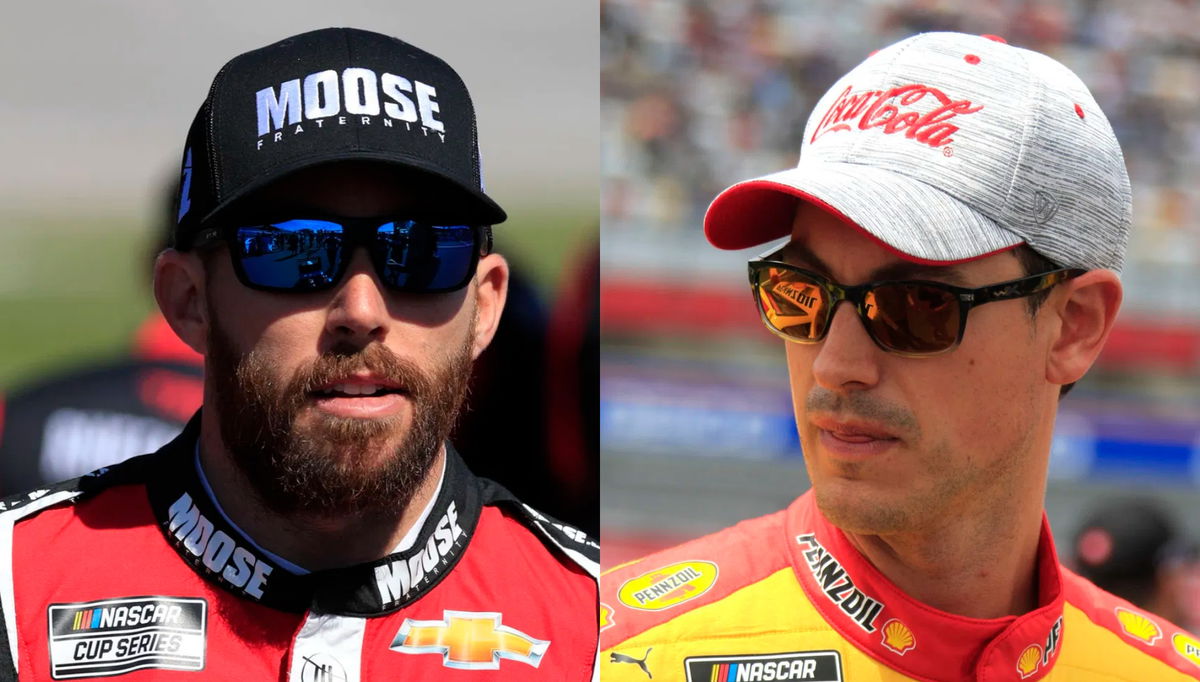
Imago
Image Credits: Imago

Imago
Image Credits: Imago
14 percent! That’s how much the NASCAR viewership has declined in 2025. And, if you’ve been following NASCAR for long, you know that this is not just this year’s story. NASCAR has been experiencing a steady slump for the past few years. And, naturally, it has left the sanctioning body running pole to pole for solutions. NASCAR tried rule changes, broadcast shake-ups, celebrity tie-ins, and even international events. But then, thankfully, they turned to something far more personal: the drivers themselves.
Watch What’s Trending Now!
And so, the Driver Ambassador Program (DAP) was launched. The premise was simple. Drivers needed to promote the sport to draw in viewers and, in turn, get paid handsomely. Now, after the ‘success’ of the program, a NASCAR veteran recently shared his opinion on it. So, what does he have to say? Let’s find out.
ADVERTISEMENT
NASCAR’s million-dollar nudge to get drivers talking
On the recent episode of the Ken and Schrader podcast, Kenny Wallace laid bare his thoughts on the Driver Ambassador Program, stating, “So NASCAR gave away $2 million because the drivers are so damn lazy now that they just won’t talk about the sport. And that’s true.”
For the uninitiated, the DAP, modeled after a now-defunct PGA Tour program, incentivized the drivers for increasing the sport’s presence among new and old fans. They created a simple yet structured points-based model where drivers earned one point for every 15 minutes spent promoting the sport.
Fan activations, interviews, and media hits were all included in this. The multipliers, however, were the program’s greatest twist. The bigger the star, the bigger the bonus. The points system was designed to help NASCAR achieve its goal of having its most well-known names in front of cameras, microphones, and spectators.
ADVERTISEMENT

Imago
NASCAR, Motorsport, USA Budweiser Duel 1 Feb 19, 2015 Daytona Beach, FL, USA Fox Sports NASCAR analyst Kenny Wallace before race one of the Budweiser Duels at Daytona International Speedway. Daytona Beach Daytona International Speedway FL USA, EDITORIAL USE ONLY PUBLICATIONxINxGERxSUIxAUTxONLY Copyright: xMikexDinovox 8391821
The program was split into two halves of the season, with the top points earner in each half taking home a massive $1 million prize. Joey Logano won the first half in 2025. And according to NASCAR’s impactful media hits and events list, it included Logano’s presence on the ‘Jimmy Kimmel Live’ and the ‘ESPYs.’
ADVERTISEMENT
Then, in the second half, the prize went to Ross Chastain. “Joey Logano, for running his mouth about how great NASCAR is, received a cool $1 million in real money. That is insane. And at the end of the year, the winner was Ross Chastain,” Wallace explained.
It wasn’t just the winners, either. According to some insiders, the top five drivers in each half were paid a substantial sum (amounts not disclosed). If we talk about the media moments that got the eyeballs, the list was broad. Bubba Wallace on “Sesame Street,” Chase Elliott at the ACM Awards, Kyle Busch on “The Pat McAfee Show,” and Kyle Larson on “The Tonight Show” and “Games With Names” were the top appearances that garnered widespread attention.
Finally, the overall list of winners included names like Kyle Larson, Christopher Bell, Kyle Busch, Daniel Suarez, and others. In the end, Wallace himself couldn’t resist. He imagined the scenario if the program existed when he was an active driver. “I’d have won, baby,” he exclaimed. Alas, his era never came with million-dollar incentives for talking into a microphone! He’d won every year (and every half) for sure.
ADVERTISEMENT
The Driver Ambassador Program in numbers
Amidst all the talk around the payout for NASCAR’s Driver Ambassador Program, the numbers behind it reveal even more about how hard the sport is working to elevate its stars. The program had 5,569 completed driver opportunities during the 2025 season. This covered a wide range of activities, including radio interviews, school visits, charity events, late-night TV appearances, and more.
Drivers in the Cup Series contributed 6.3 thousand hours collectively to the promotion of NASCAR. Naturally, this resulted in the sport gaining widespread attention in ways that few in the industry anticipated. Since January, the combined social media audience for participating drivers grew by a massive 802,000 followers, marking a 4.5% season-long growth.
ADVERTISEMENT
The media landscape shifted, too. NASCAR tracked 3.9 million earned media mentions between January and November, tied to drivers in the program. This is a 17% jump from the previous season. That spike wasn’t just volume. It was the variety as well.
Network television, national podcasts, streaming features, sports talk shows, award ceremonies, and viral social moments all funneled into one overarching message. When properly portrayed, NASCAR protagonists continue to have an impact. Above all, the figures fundamentally showed what NASCAR has struggled with for years: infrastructure is required for exposure.
The cultural impact of the sport increases when drivers are encouraged, organized, and supported. Drivers in NASCAR do not need to change who they are. Instead, it simply requires their regular attendance. Something that is easily attainable. It will be intriguing to observe how the DAP develops and draws in more viewers in the future.
But, if the 2025 numbers are any indication, NASCAR may have finally discovered a formula for converting regular exposure into sustained fan momentum.
ADVERTISEMENT
ADVERTISEMENT
ADVERTISEMENT

